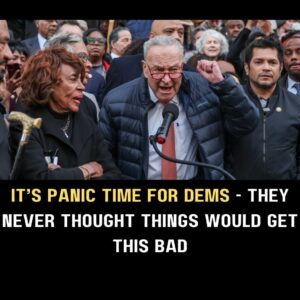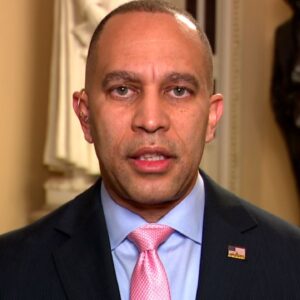“They Did Sign Up For It”: Trump Defends Controversial Policies as He Marks 100 Days in Office
In a wide-ranging and at times combative interview marking his first 100 days back in the White House, President Donald Trump offered a stark message to voters expressing buyer’s remorse over his administration’s economic policies: “They did sign up for it, actually.” This blunt assessment came as the 47th President faces historically low approval ratings and growing concerns about the impact of his aggressive trade policies on American consumers.
President Trump commemorated his 100th day in office on April 29, sitting down with ABC News veteran correspondent Terry Moran for what was billed as a comprehensive review of his administration’s early accomplishments. The interview, conducted in the Oval Office against the backdrop of presidential portraits and the iconic Resolute Desk, covered a broad spectrum of topics from immigration to inflation, foreign policy to fuel prices.
The setting—a symbol of presidential power that Trump reclaimed after his historic comeback victory—provided a stark contrast to the political wilderness he inhabited following his 2020 defeat. Now back at the helm of American government, Trump appeared eager to project confidence and defend his administration’s direction despite growing public skepticism.
Throughout the interview, Trump maintained his characteristic assertiveness, frequently interrupting Moran to challenge premises or reframe questions. Body language experts noted that the President leaned forward during discussions of the economy and border security—issues he considers his strongest—while adopting a more defensive posture when confronted with polling data suggesting public dissatisfaction.
The Economy: Campaign Promises vs. Public Concern
The most pointed exchange came when Moran raised concerns about Trump’s escalating trade war with China, which has seen the administration implement substantial tariffs on Chinese imports. Economic analysts have projected these measures could cost American households thousands of additional dollars annually as import prices rise and supply chains face disruption.
“There is a lot of concern out there,” Moran observed. “People are worried, even some people who voted for you, sayin’, ‘I didn’t sign up for this.’ So how do you answer those concerns?”
Trump’s eight-word retort—”Well, they did sign up for it, actually”—has quickly become a flashpoint in political discourse, with supporters praising his directness and critics characterizing the response as dismissive of legitimate economic anxieties.
The President elaborated on his position, arguing that economic nationalism formed the cornerstone of his 2024 campaign platform. “That’s what I campaigned on,” Trump insisted, his voice rising for emphasis. “We’ve been abused by other countries at levels that nobody’s ever seen before, and it’s not sustainable.”
This exchange highlights a fundamental tension in Trump’s second term: balancing his nationalist economic agenda with the immediate economic concerns of middle-class voters who supported his return to office. While many Trump voters embraced his promises to prioritize American manufacturing and challenge Chinese trade practices, the short-term pain of these policies appears to be testing their patience.
The President’s Economic Case
Despite growing criticism, Trump presented a vigorous defense of his economic policies, pointing to several metrics he believes demonstrate early success. Most prominently, he highlighted decreasing energy costs, particularly gasoline prices.
“Energy is down,” Trump declared with evident satisfaction. “Gasoline hit $1.98 in a few states during the last couple of days. It was $3.50 and $4.00 and $4.50. But gasoline is way down.”
The President also referenced the price of eggs—a staple product whose cost became a political liability for the previous administration during a period of high inflation. “When I took over, you remember the big thing with eggs?… Well, eggs are down 87% since I got involved,” Trump claimed, though fact-checkers have noted this figure significantly overstates the actual price decrease.
Throughout these economic discussions, Trump repeatedly employed a rhetorical technique of contrasting current conditions with what he characterized as the failures of his predecessor’s policies. This before-and-after framing serves to reinforce his narrative of rescuing an economy in distress, even as economists debate whether recent positive trends began before his return to office.
When pressed on the potential long-term consequences of his trade policies, Trump projected unwavering confidence: “It’s all heading in the right direction,” he assured viewers. “Everyone’s gonna be just fine.”
China Trade War: Strategy or Self-Inflicted Wound?
The centerpiece of Trump’s economic agenda—and the focus of growing public concern—is his administration’s increasingly confrontational stance toward China. The President has significantly expanded tariffs on Chinese imports, moving beyond the targeted measures of his first term to implement broader restrictions affecting consumer goods, electronics, and manufacturing components.
Administration officials have framed these measures as necessary to address what they describe as decades of unfair trade practices, intellectual property theft, and currency manipulation by Beijing. Treasury Secretary J.D. Vance, appearing on Sunday morning talk shows, characterized the tariffs as “painful but necessary medicine” to rebalance the U.S.-China economic relationship.
“We’re engaged in economic competition with a regime that doesn’t play by the rules,” Vance told Fox News’ Shannon Bream. “The President is using every tool at his disposal to level the playing field, even if that means short-term disruptions to supply chains and consumer prices.”
Economic analysts, however, have expressed grave concerns about the strategy’s impact on American consumers and businesses. Mark Zandi, chief economist at Moody’s Analytics, projects that the average American household could face additional costs of $2,000 to $3,000 annually if the full range of proposed tariffs is implemented.
“Tariffs are effectively a tax paid by American importers and ultimately passed on to American consumers,” Zandi explained in a recent analysis. “While they may pressure China economically, the immediate financial burden falls squarely on American households and businesses that rely on imported goods.”
The manufacturing sector—a key part of Trump’s political base—has reported mixed reactions to the tariff strategy. While some domestic manufacturers have welcomed protection from Chinese competition, others dependent on Chinese components have raised alarms about rising input costs and supply chain disruptions.
In Michigan’s critical automotive manufacturing region, companies have reported that tariffs on specialized steel and electronic components have increased production costs by as much as 15% for some vehicle models. Similar concerns have emerged from technology firms in Texas and furniture manufacturers in North Carolina, suggesting the economic impact of Trump’s trade policies may be felt most acutely in states that were crucial to his electoral victory.
Immigration and Border Security: Claims of Success
Beyond economic policies, Trump devoted significant attention to immigration and border security—issues that formed the emotional core of his campaign rhetoric. The President claimed dramatic success in reducing illegal border crossings, pointing to enhanced enforcement measures and diplomatic agreements with Mexico and Central American nations.




